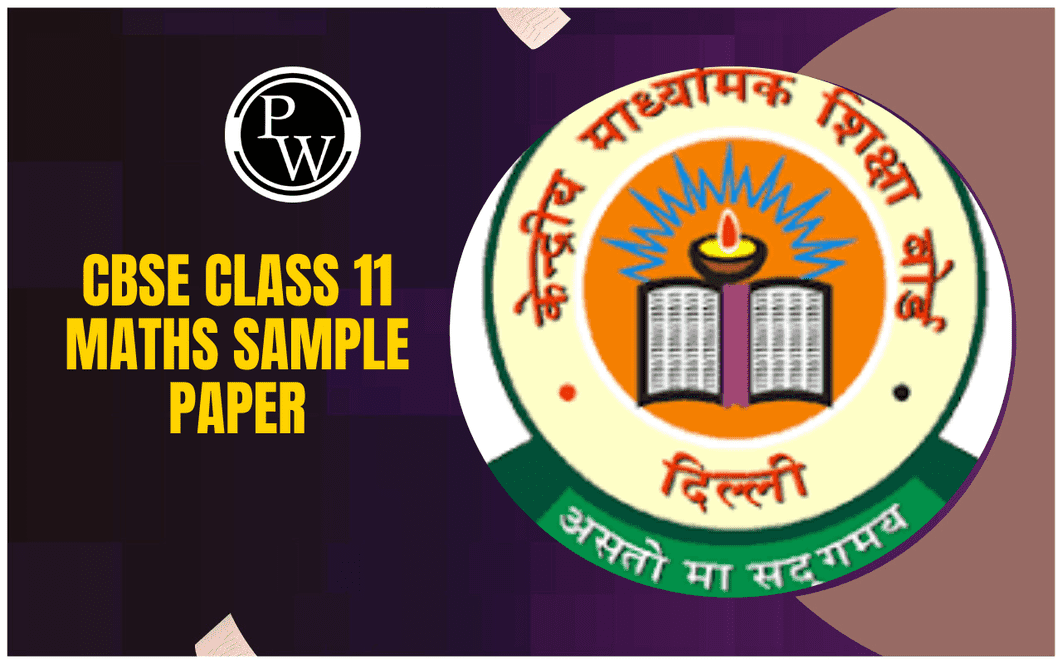
CBSE Class 11 Maths Notes Chapter 8: Chapter 8 of CBSE Class 11 Maths focuses on the Binomial Theorem. In this chapter we will learn how to expand binomials raised to positive integer powers.
It introduces binomial coefficients and Pascal's triangle. Understanding this theorem helps simplify complex algebraic expressions and solve problems in areas like probability, algebra, and calculus. The notes for this chapter provide a clear explanation of binomial expansion, making it easier for students to understand and apply these concepts in their studies and daily life.CBSE Class 11 Maths Notes Chapter 8 Binomial Theorem PDF
You can find the study notes for Chapter 8 on the Binomial Theorem in CBSE Class 11 Maths through the PDF link provided below. These notes help you understand the topics covered in this chapter better. They explain things like binomial expansion and coefficients in a straightforward way. Whether you are preparing for exams or just want to improve your understanding of the binomial theorem, these notes can be really helpful.CBSE Class 11 Maths Notes Chapter 8 Binomial Theorem PDF
Binomial Theorem Class 11 Topics
In the study of binomial theorem in Class 11, several key topics and sub-topics are covered to provide a comprehensive understanding. These include:Introduction: An overview of the binomial theorem and its significance in expanding binomial expressions.
Binomial theorem for positive integral indices: How to expand binomial expressions raised to positive integer powers using Pascal's triangle and combinatorial methods.
Binomial theorem for any positive integer n: Understanding the expansion of binomials for any positive integer exponent, including the formula and its application.
Special Cases: Investigating special cases such as when the exponent is a negative integer or a fractional number, and understanding the implications.
General and Middle Term: Learning about the general term in the expansion of a binomial expression and finding the middle term in even and odd expansions.
CBSE Class 11 Maths Notes Chapter 8 Binomial Theorem
The solutions to Chapter 8 on the Binomial Theorem in CBSE Class 11 Maths are available below. These solutions are a valuable resource for students to enhance their understanding of various concepts covered in this chapter. From binomial expansion to understanding the coefficients, these solutions provide clear explanations and step-by-step methods to solve problems.Binomial Theorem
The binomial theorem is a fundamental concept in algebra that provides a way to expand expressions of the form (a + b)^n, where "a" and "b" are numbers or variables, and "n" is a positive integer or a rational number. The theorem states that such an expression can be expanded into a sum of terms, where each term is of the form 𝐶(𝑛,𝑘)⋅𝑎𝑛−𝑘⋅𝑏𝑘 , where 𝐶(𝑛,𝑘) represents the binomial coefficient, also known as "n choose k," which is the number of ways to choose k elements from a set of n elements. The binomial theorem has numerous applications in various branches of mathematics, including combinatorics, calculus, and probability theory. It is used extensively in solving problems involving permutations, combinations, and probability distributions. Moreover, it forms the basis for many other mathematical concepts and techniques, making it an essential topic for study in mathematics.General and Middle terms
Binomial Theorem for any Positive Integer 𝑛
Remarks:
Binomial theorem can also be written as, (a+b)n=∑k=0nnCkan-kbk(a+b)n=∑k=0nnCkan-kbk Where, ∑k=0nnCkan-kbk∑k=0nnCkan-kbk represents nC0anb0+nC1an-1b1+nC2an-2b2+.....+nCna0bnnC0anb0+nC1an-1b1+nC2an-2b2+.....+nCna0bn The coefficients nCrnCr are known as binomial coefficients.Binomial Theorem Class 11 Examples
Example 1: Expand: [x 2 + (3/x)] 4 , x ≠ 0 Solution: [x 2 + (3/x)] 4 Using binomial theorem, [x 2 + (3/x)] 4 = 4 C 0 (x 2 ) 4 + 4 C 1 (x 2 ) 3 (3/x) + 4 C 2 (x 2 ) 2 (3/x) 2 + 4 C 3 (x 2 ) (3/x) 3 + 4 C 4 (3/x) 4 = x 8 + 4 x 6 (3/x) + 6 x 4 (9/x 2 ) + 4 x 2 (27/x 3 ) + (81/x 4 ) = x 8 + 12x 5 + 54x 2 + (108/x) + (81/x 4 ) Example 2: Compute (98) 5 Solution: Let us write the number 98 as the difference between the two numbers. 98 = 100 – 2 So, (98) 5 = (100 – 2) 5 Using binomial expansion, (98) 5 = 5 C 0 (100) 5 – 5 C 1 (100) 4 (2) + 5 C 2 (100) 3 (2) 2 – 5 C 3 (100) 2 (2) 3 + 5 C 4 (100) (2) 4 – 5 C 5 (2) 5 = 10000000000 – 5 × 100000000 × 2 + 10 × 1000000 × 4 – 10 ×10000 × 8 + 5 × 100 × 16 – 32 = 10040008000 – 1000800032 = 9039207968 Example 3: Find the coefficient of x 6 y 3 in the expansion (x + 2y) 9 . Solution: Let x 6 y 3 be the (r + 1)th term of the expansion (x + 2y) 9 . So, T r+1 = 9 C r x 9-r (2y) r x 6 y 3 = 9 C r x 9-r 2 r y r By comparing the indices of x and y, we get r = 3. Coefficient of x 6 y 3 = 9 C 3 (2) 3 = 84 × 8 = 672 Therefore, the coefficient of x 6 y 3 in the expansion (x + 2y) 9 is 672. Example 4: The second, third and fourth terms in the binomial expansion (x + a) n are 240, 720 and 1080, respectively. Find x, a and n. Solution: Given, Second term = T 2 = 240 Third term = T 3 = 720 Fourth term = T 4 = 1080 Now, T 2 = T 1+1 = n C 1 x n-1 (a) n C 1 x n-1 a = 240….(i) Similarly, n C 2 x n-2 a 2 = 720….(ii) n C 3 x n-3 a 3 = 1080….(iii) Dividing (ii) by (i), [ n C 2 x n-2 a 2 ]/ [ n C 1 x n-1 a] = 720/240 [(n – 1)!/(n – 2)!].(a/x) = 6 (n – 1) (a/x) = 6 a/x = 6/(n – 1)….(iv) Similarly, by dividing (iii) by (ii), a/x = 9/[2(n – 2)]….(v) From (iv) and (v), 6/(n – 1) = 9/[2(n – 2)] 12(n – 2) = 9(n – 1) 12n – 24 = 9n – 9 12n – 9n = 24 – 9 3n = 15 n = 5 Subsituting n = 5 in (i), 5 C 1 x 4 a = 240 ax 4 = 240/5 ax 4 = 48….(vi) Substituting n = 5 in (iv), a/x = 6/(5 – 1) a/x = 6/4 = 3/2 a = (3x/2) Putting this oin equ (vi), we get; (3x/2) x 4 = 48 x 5 = 32 x 5 = 25 ⇒ x = 2 Substituting x = 2 in a = (3x/2) a = 3(2)/2 = 3 Therefore, x = 2, a = 3 and n = 5.Benefits of CBSE Class 11 Maths Notes Chapter 8 Binomial Theorem
- CBSE Class 11 Maths Notes for Chapter 8 on Binomial Theorem provide detailed coverage of the topic.
- They provide explanations of concepts in simple language, making it easier for students to understand.
- The notes include examples and illustrations to clarify key points and demonstrate problem-solving techniques.
- Students can access the notes online, making them convenient for studying anytime and anywhere.
- These notes provide practice questions and exercises to help students reinforce their learning.
- They are a valuable resource for revision before exams, helping students to consolidate their understanding and prepare effectively.
- The CBSE Class 11 Maths Notes for Binomial Theorem are beneficial for students in mastering the subject and achieving academic success.
CBSE Class 11 Maths Notes Chapter 8 FAQs
What is the binomial theorem?
What is Pascal's triangle?
How do you prove the binomial theorem?
What is the significance of the middle term in a binomial expansion?










